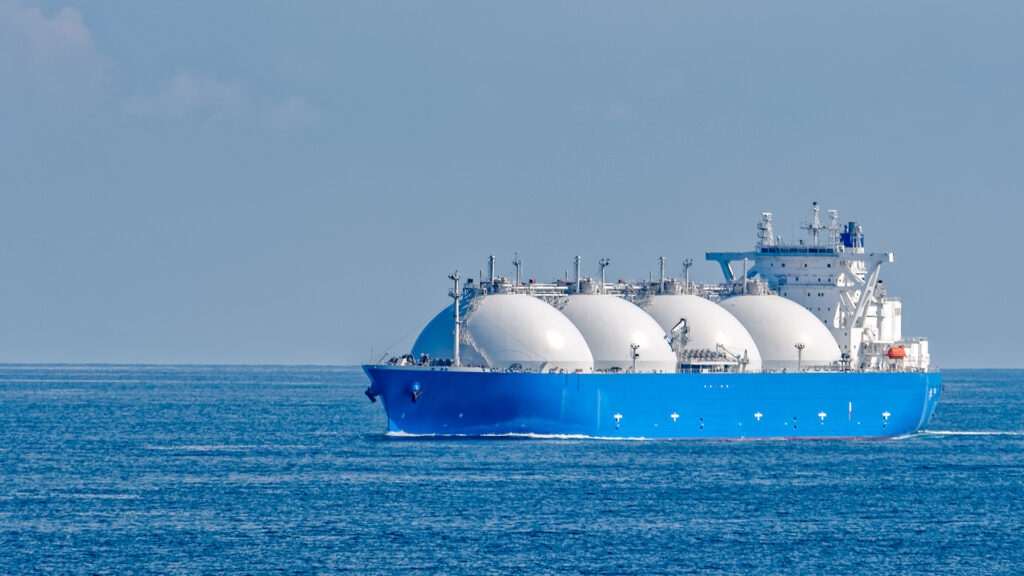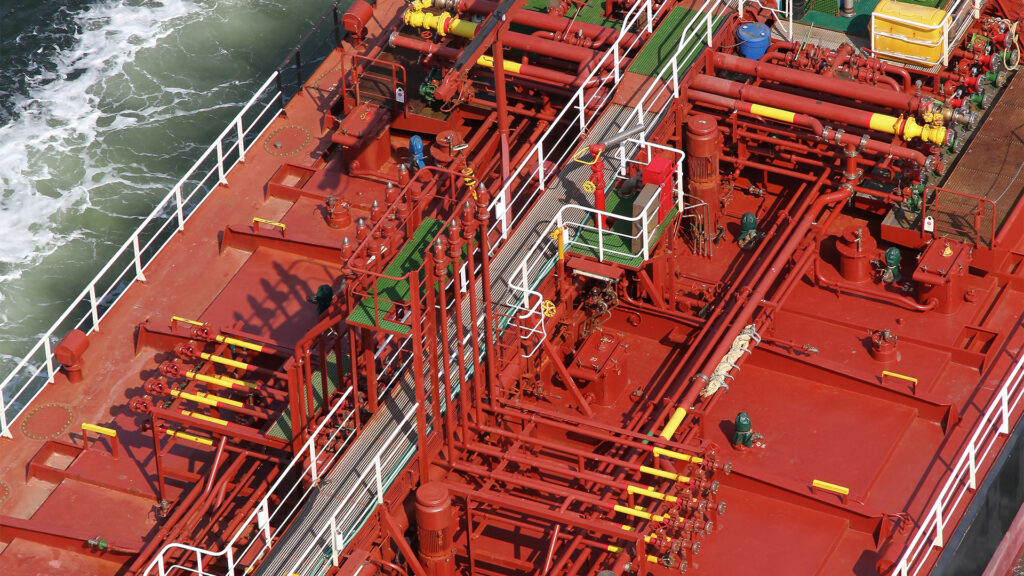Autonomous ships: Developments continue apace
In our February 2021 bulletin1, we discussed the significant developments in Maritime Autonomous Surface Ships (MASS) and how MASS were encompassing all aspects of the shipping industry.
Since our last bulletin, the International Maritime Organisation (IMO) announced the completion of its regulatory scoping exercise and we have seen the launch of “MASSPeople” to help develop training, qualification requirements and competency standards for remote and autonomous operators. The MASS industry continues to build apace and in this bulletin we consider some of the regulatory issues for new entrants/shipowners as well as some key commercial developments in the industry, including the planned deployment of autonomous tug boats and passenger ferries.
IMO completes regulatory scoping exercise
Regular readers of our bulletins will recall that in June 2017, the Maritime Safety Committee (MSC) of the IMO, following its 98th session, approved a Regulatory Scoping Exercise (RSE) to address how existing IMO instruments could be applied to the safe, secure, and environmentally sound operation of MASS. At its 103rd session in May 2021, the MSC announced that the RSE was complete 2. This represents an important first step for further discussions to ensure that regulation keeps pace with technological developments.
For the purpose of the RSE, “MASS” were defined as ships, which to a varying degree, can operate independent of human interaction. Degrees of autonomy were organised as follows:
- Degree One: Crewed ship with automated processes and decision support
- Degree Two: Remotely controlled ship with seafarers on board (ship is controlled and operated from another location, but seafarers on board can take control of and operate the shipboard systems and functions)
- Degree Three: Remotely controlled ship without seafarers on board (ship controlled and operated from another location)
- Degree Four: Fully autonomous ship (the operating system of the ship can make decisions and determine actions by itself)
The RSE considered that MASS could be operating at one or more degrees of autonomy for the duration of a single voyage.
The RSE identified common potential gaps and/or themes required for MASS operations across a number of key regulatory instruments, in particular SOLAS, STCW and the Load Lines Convention. Some of the common potential gaps and/or themes identified include:
- The meaning of the terms master, crew or responsible person
- Remote Control Station/Centre
- Remote Operator as a seafarer
- Provisions requiring actions by personnel (fire, spillage, cargo management, on board maintenance etc)
Some of the common potential gaps and/or themes are critical to MASS operations, while others focus on technical aspects.
The IMO has said that one of the high-priority issues cutting across several instruments is the need to clarify the meaning of the terms master, crew or responsible person. In particular, the role, responsibility and definition of master for Degrees Three and Four where shore side personnel might be in control of the ship.
The RSE considered that the many common potential gaps and/or themes could be addressed through a new instrument (e.g. a “MASS Code”), which could be developed using a goal-based approach. Otherwise, addressing every individual IMO instrument could lead to confusion and inconsistencies and affect existing regulations applicable to conventional ships. A number of IMO instruments under the ambit of the MSC classified as “high-priority”, include SOLAS, COLREGs, and STCW.
The Committee has invited member states to submit proposals on how to achieve the best way forward to a future session of the MSC.
MarLab Report
In November 2020, the UK’s Maritime and Coastguard Agency (MCA) published the results of its MARLab project (MARLab Report), which considered the extent to which UK regulation must adapt to accommodate (and promote) the MASS industry. The information gathered in the report has enabled the MCA to begin reviewing the Workboat Code to address regulatory gaps and barriers for autonomous vessels under 24m in length. For larger vessels, however, the MCA will need to conduct a broader review of the Merchant Shipping Act 1995 and other statutory instruments. In the meantime, the MCA has created the Maritime Future Technologies to encourage and “facilitate the implementation of trials and projects, support regulatory updates and drive forward change in industry in the uptake of innovative technologies in both Emission Reduction and Autonomy”.3
MASSPeople
Geo-data specialist Fugro, in partnership with SeaBot XR and the UK MCA, has launched “MASSPeople” – the MASS International Training Standards Working Group 4, to explore the role of human operation in relation to autonomous and AI technology. MASSPeople consists of representatives from European and international maritime authorities who will work together to develop training, qualification requirements and competency standards for remote and autonomous operators. The group will provide recommendations on new competency standards for inclusion in STCW, and aims to propose specialisms, training structures and qualification requirements for remote and autonomous operators.
Mass in the news
The Mayflower
On 15 June 2021, the “MAYFLOWER” – first reported in our January 2020 bulletin 5 – began her long-awaited transatlantic voyage from Plymouth, UK to Provincetown, Massachusetts (supported by IBM automation technology and machine data solutions from the UK Hydrographic Office6). Unfortunately, the voyage ended shortly after it began.
Within 5 days of departing Plymouth, the “MAYFLOWER” experienced mechanical issues (unrelated to her automation software) forcing the vessel to return to Plymouth for repairs; 7 we hope she is able to resume her voyage soon. We explore below current regulatory framework that is in place for her eventual arrival in Massachusetts.
At present, the U.S. regulatory environment for autonomous and AI technology is very much in its infancy. Last year, the United States Coast Guard opened a consultation period for proposed rule-making on autonomous vessels and AI technologies. 8 In many ways, the consultation revealed a blank slate – an invitation and clear intention to revise and/or remove existing policy and regulations that hamper innovation (and an intention to create new laws encouraging it). In particular, the consultation focused on the following key issues:
- What existing regulations and/or policies may hinder or prevent industry participants from developing, evaluating and implementing autonomous and AI technologies.
- What changes should be made to promote the development of autonomous and AI technology and/or facilitate the testing of, or enhance coordination of, autonomous and AI technologies currently in development.
- What new regulations and/or policy guidance is needed to increase clarity and certainty in the U.S. maritime industry, and to encourage industry participants to innovate.
- What potential cost-savings can be made and what cybersecurity threats and upgrades will be required (both to vessels and ports) to facilitate the operation of autonomous and AI technology.
Despite the consultation period ending on 13 October 2020, no new regulations have been implemented (or indeed suggested). However that is not to say they are not on the agenda. Recent developments in the U.S. demonstrate a clear desire to foster the use of autonomous/AI
technology at both private and federal level (see, for example, Exec. Order No. 13960, 85 Fed. Reg. 78939 (2020) promoting the use of trustworthy AI technology in federal government). On a related note, a US Navy “Ghost Fleet Overlord” unmanned vessel named “NOMAD” has recently completed a second long-range autonomous voyage of 4,421 nautical miles from the Gulf Coast to the West Coast via the Panama Canal. 98% of the voyage was completed in autonomous mode, although passage of the canal was in manual mode.
The Armada Fleet
As reported in our previous bulletin 9, Ocean Infinity, a marine robotics and ocean data company, announced plans in November 2020 to develop eight marine robotic vessels as part of its wider Armada fleet (a fleet of robotic surface vessels, first launched in February 2020). Since then, Ocean Infinity has acquired MMT, a data analytics provider, to boost the marine survey and data analytics of the Autonomous Underwater Vehicles (AUVs) on board the Armada vessels.10 Ocean Infinity has also formed a joint venture (JV) with Gregg Drilling, a leader in drilling, sampling and subsurface investigation, to provide geotechnical services to the offshore and renewable energy sectors using the Armada fleet. The JV will see Gregg Drilling mobilise its seabed drills onto the Armada fleet to facilitate sustainable underwater development (including geotechnical data collection) and support offshore wind anchor and foundation design.11
Palfinger, an Austrian manufacturer of hydraulic lifting, loading, and handling systems, has also been selected by VARD (the designer of the Armada fleet) to supply rescue boats, davits and tailor-made winches to the fleet, which is estimated for delivery before the end of 2023. 12
Other developments
In March 2021, UK-based companies Hydrosurv and ORE Catapult announced the development of two autonomous survey vessels “REAV-16” and “REAV-40” as part of a UK-funded project for unmanned MASS. 13 The MASS will use a range of sensors and task-orientated payloads to deliver efficient survey and inspection in the offshore wind sector. The project is expected to reduce the cost of offshore surveys and inspections by up to 60%.14
In Europe, Germany’s Kiel University recently received millions of Euros in funding from the Federal Ministry of Transport to develop its “Clean Autonomous Public Transport Network (CAPTN)” initiative. 15 The initiative will see the development of an autonomous electric ferry “VAIARO”. While technical details are limited, we understand that the ferry will be self-piloted and will use an electric propulsion system for quiet, emission free travel.
Kongsberg Maritime, a Norwegian global technology and solutions provider, has also agreed to supply four MASS to Norway’s Institute of Marine Research (IMR). 16 The supply contract, which forms part of IMR’s long-term strategy to promote sustainable sea practices, includes two “Maritime Sounder Unmanned Surface Vehicles” (USVs) and two AUVs for environmental monitoring and seabed mapping. Both the USVs and the AUVs will be equipped with Kongsberg’s cloud-based ecosystem, Blue Insight, and controlled by a single interface to facilitate remote instrument operation, data visualisation and smart management of oceanographic and meteorological data.
Meanwhile, Kongsberg Maritime has also reached an agreement with towage operator Svitzer and the American Bureau of Shipping to jointly develop the “RECOTUG” – the world’s first fully remotely controlled commercial tug boat. 17
Law enforcement and military vessels
The UK Ministry of Defence (MOD) has agreed to provide funding to Rolls-Royce to develop its Artificial Chief Engineer technology – an autonomous control system that enables naval vessels to undertake longer, higher-risk missions with less human involvement. The development programme is expected to last 16 months and will look at how human-AI collaboration can be exploited to improve decision-making and planning within complex operating environments. 18
In March, the U.S. Navy and the Marine Corps published a new joint strategy, the “Unmanned Campaign Framework”, for building and deploying autonomous vessels and systems. 19 Among other things, the framework sets out the role of the U.S. Navy’s planned Large Unmanned Surface Vessel (LUSV) – a high endurance vessel designed to add offensive weapons and strike capability to the U.S. Navy’s Surface Development Squadron One (autonomous) fleet.
Also in March, the UK Royal Navy’s new Autonomy and Lethality Accelerator division (NavyX), took delivery of a new autonomous vessel named “MADFOX”, which will enable the Royal Navy to explore the role that MASS can play in complex operations within its future fleet. In June, the Royal Navy took delivery of its third and final autonomous minehunting boat, RNMB “HEBE”, which will form part of the Royal Navy’s crewless minehunting programme Project Wilton. 20
The Republic of Singapore’s Navy has unveiled plans to deploy new Maritime Security Unmanned Surface Vessels to patrol and secure Singapore’s territorial waters. The new USVs will complement the Navy’s manned vessels and will be equipped with autonomous navigation systems and a collision detection and avoidance system to navigate traffic in the Singapore Strait and cope with local weather conditions. 21
In April, Turkey’s ARES Shipyard and Meteksan Defence launched its first Armed Unmanned Surface Vehicle (AUSV) prototype vessel “ULAQ AUSV”. 22 The AUSV has an encrypted communication infrastructure, which may be operated from mobile vehicles or sea platforms. Along with missile capability, the AUSV will be equipped with various intelligence systems (e.g. jamming and electronic warfare systems) and will be used for operations such as mine counter measures and search and rescue missions.
HFW involvement
On 10 February 2021, as part of our popular Offshore Webinar Series, HFW delivered a well-received presentation on ‘The rise of the machines: the increasing use of AI and autonomous vessels in the offshore industry and implications for cyber insurance’. 23
In addition, on 16 May 2021, HFW’s Global Head of Shipping, Paul Dean, presented at CyberOwl’s virtual conference “Cybersecure at Sea 2021: From Compliance to Confidence”. 24
HFW’s Jonathan Goulding will also be presenting (and moderating a session) at the Autonomous Ship Technology Symposium which is taking place remotely on 16 and 17 September 2021.
Footnotes:
- https://www.hfw.com/downloads/002750-HFW-Autonomou…
- The outcome of the Regulatory Scoping Exercise (RSE) was discussed by the MASS Working Group and has been published in an Annex to MSC.1/Circ.1638
- https://www.gov.uk/government/publications/maritim… (at section 7)
- https://www.fugro.com/media-centre/news/fulldetail…
- https://www.hfw.com/downloads/001758-HFW-Automonou…
- https://www.gov.uk/government/news/ukho-supports-m…
- https://www.bbc.co.uk/news/uk-england-devon-575383…
- Department of Homeland Security; Request for Information on Integration of Automated and Autonomous Commercial Vessels and Vessel Technologies into the Maritime Transportation System, 85 Fed. Reg. 48548 (Aug. 11, 2020).
- https://www.hfw.com/downloads/002750-HFW-Autonomou…
- https://oceaninfinity.com/2021/03/ocean-infinity-a…
- https://oceaninfinity.com/2021/04/ocean-infinity-a…
- https://www.offshore-energy.biz/palfinger-to-provi…
- https://ore.catapult.org.uk/press-releases/innovat…
- https://www.offshorewind.biz/2021/03/19/watch-brit…
- https://robbreport.com/motors/marine/captn-vaiaro-… and https://www.uni-kiel.de/de/detailansicht/news/071-…
- https://www.kongsberg.com/newsandmedia/news-archiv…
- https://www.svitzer.com/press-and-media/news-and-r…
- https://www.theengineer.co.uk/rolls-royce-lands-fu…
- https://www.navy.mil/Portals/1/Strategic/20210315%…
- https://www.royalnavy.mod.uk/news-and-latest-activ…
- https://www.navalnews.com/naval-news/2021/03/meet-…
- https://www.army-technology.com/contractors/electr…
- https://hfw.zoom.us/rec/play/hd6Kzo4J-gEvx-s80Be_v…
- https://www.cyberowl.io/resources/cybersecure-at-s…

Download a PDF version of ‘Autonomous ships: Developments continue apace’










